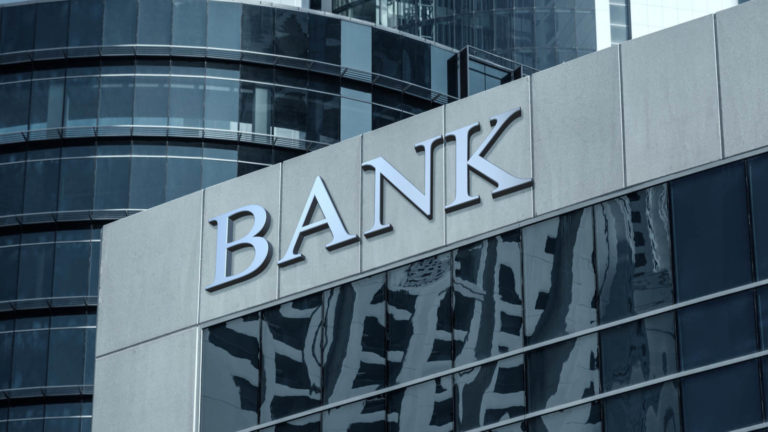A recent column by Bloomberg’s Matt Levine got me thinking about investing in bank mergers. Levine notes that the fact that there are so many banks in the United States makes bank mergers inevitable.
“One conclusion that a lot of people have drawn from the 2023 crisis of U.S. regional banks is that the U.S. has way too many regional banks,” Levine wrote on July 5. “There are more than 4,000 banks, which creates a lot of work for bank supervisors, and which means that it’s hard for depositors to be sure that their bank is safe. When depositors get nervous, they run to household-name too-big-to-fail banks, leaving the other, you know, 3,990 banks vulnerable.”
Levine says that if Treasury Secretary Janet Yellen could wave a magic wand and cut the number of banks in the U.S. in half, she would.
Bank consolidation isn’t new, but the rate at which it’s poised to happen is not something we’ve seen in some time. Yet, the odds of predicting the correct merger partners are very low given the number of banks. However, if you buy a few financial sector ETFs, you can increase your chance of success with little effort.
iShares U.S. Financials ETF (IYF)

One of the largest financial sector ETFs by net assets is the iShares U.S. Financials ETF (NYSEARCA:IYF) with $1.81 billion. Morningstar gives it four stars out of five.
The ETF tracks the performance of the Russell 1000 Financials 40 Act 15/22.5 Daily Capped Index. While the index name is a mouthful, it selects the stocks from the 1,000 largest companies in the Russell 3000 Index. The 15 means a company’s weighting can’t exceed 15%, and the 22.5 means that companies with weightings over 4.5% can’t exceed 22.5% in aggregate. So, if you had four companies with 5% weightings, you couldn’t have a fifth.
The ETF has been around since May 2000. It has 137 holdings, with banks accounting for 28.8% of the portfolio. Large caps account for 68% of the ETF’s net assets, with small caps and microcaps accounting for 32%.
Its top 10 holdings account for 47% of the fund’s net assets, with JPMorgan Chase (NYSE:JPM) and Bank of America (NYSE:BAC) the second- and third-largest holdings by weight at 9.3% and 4.4%, respectively. Berkshire Hathaway (NYSE:BRK-B) is the No. 1 holding with a weighting of 13.3%.
Over the past 10 years, IYF averaged an annual total return of 9.2%. Year to date, it has underperformed with a return of just 1.4%. But shares could get a boost from news of bank mergers, as well as positive earnings reports from the big banks.
Fidelity MSCI Financials Index ETF (FNCL)

The Fidelity MSCI Financials Index ETF (NYSEARCA:FNCL) is another of the largest financial sector ETFs with net assets of
$1.36 billion. Morningstar gives this one four stars as well.
FNCL tracks the performance of the MSCI USA IMI Financials 25/50 Index, a collection of stocks considered part of the financial sector according to the Global Industry Classification Standard (GICS).
Large-cap stocks account for 67.3% of the portfolio, followed by midcaps at 22.1%, and small-cap and microcap stocks at 10.6%.
The ETF has 415 holdings, with the top 10 accounting for nearly 44% of the net assets. Banks in the top 10 include JPMorgan Chase, Bank of America, Wells Fargo (NYSE:WFC) and Goldman Sachs (NYSE:GS). The fund’s bank weighting is 26.7%.
M&T Bank (NYSE:MTB) and Fifth Third Bancorp (NASDAQ:FITB) are two potential acquisition targets among its holdings.
Launched in October 2013, FNCL has averaged an annual total return of 15.6% over the past three years and 9.4% since inception. Like IYF, it is up only slightly in 2023, which could make it ideal for value investors.
Invesco S&P 500 Equal Weight Financials ETF (RSPF)

Invesco S&P 500 Equal Weight Financials ETF (NYSEARCA:RSPF) is the smallest of today’s financial sector ETFs that could be used for investing in bank mergers. It has $280.6 million in assets with a four-star rating from Morningstar.
Unlike the two previous financial sector ETFs, RSPF is an equal-weight fund. This means its 73 holdings are rebalanced back to a 1.37% weight four times a year. They do it all again three months later.
I’ve always been a fan of equal-weight funds because they allow smaller stocks to be included. For example, JPMorgan has a 9.3% weighting in IYF. In RSPF, it has a 1.41% weighting, less than several banks, including Comerica (NYSE:CMA) and U.S. Bancorp (NYSE:USB).
RSPF got its start in November 2006. While it’s not the cheapest in terms of management expenses at 0.40%, its performance over the past 10 years is similar to IYF at 9.6%.
One thing to keep in mind with RSPF is that banks only account for 20.6% of its net assets. If your goal is to bet on bank consolidation, the lower weighting could reduce your chances of success. However, unlike the other two ETFs, midcap stocks account for nearly 57% of the fund’s net assets. The bigger banks will likely buy midcaps rather than small caps, which have a 7.2% weighting in this fund.
I think you’ll do fine with any of these three ETFs if you’re investing in bank mergers.
On the date of publication, Will Ashworth did not have (either directly or indirectly) any positions in the securities mentioned in this article. The opinions expressed in this article are those of the writer, subject to the InvestorPlace.com Publishing Guidelines.
